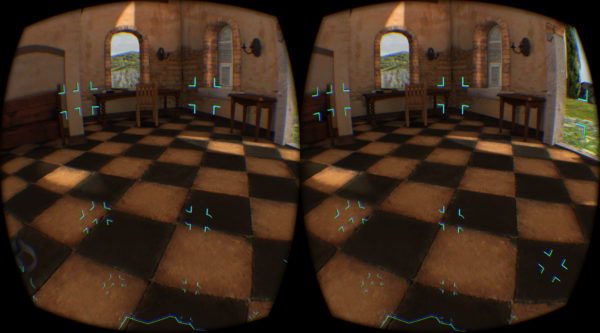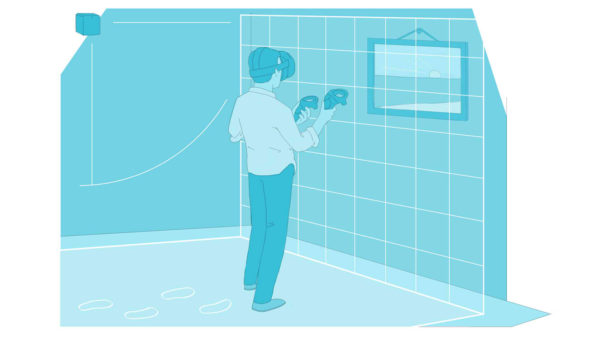Oculus Introduces Guardian, A Boundary System For Touch

Room-scale VR experiences let you move around your virtual world with a sense of location in the room you’re currently in. While HTC Vive has already have this feature built right in, the Oculus Rift is seen to be inclined towards moving to a room-scale-based VR from stationary-based VR. And this move has been confirmed by Oculus itself, by announcing that they are developing a VR boundary system called Guardian.
According to Oculus, the Guardian VR boundary system is designed to show its user on-screen, in-app wall and floor markers when they get near boundaries they have defined. When the user gets too close to the edge of a boundary, translucent boundary markers are displayed in a layer that is superimposed over the game or experience.
In the advent of VR, stationary-based experiences are the norm – we’ve seen VR headsets hard-tethered to computers and are made to be used while sitting or just standing. While this is the case for early days of VR, room-scale experiences have evolved from the development of motion tracking hardware such as handheld motion controllers, base stations, and haptics-enabled devices. These led to room-scale VR experiences where you can roam around a certain space while keeping your relative location in your virtual world. This can be quite problematic without a boundary system, and that is why Oculus is inclined to make their own for the Rift-Touch combo.

Not only Guardian was developed to restrain its users from bumping themselves against walls or other physical obstructions while using VR, it was also made to enhance VR experiences on the Rift that make use of gamepads. It’s quite common for Rift users who use gamepads in stationary-based VR to hit themselves with desks and walls – the result of the lack of sense of perception of space in a certain area. Guardian is aimed to solve that problem, and eventually give an overall much better VR experience for Oculus’ customers.
Room-scale VR boundary systems are not new – HTC Vive have this feature since its inception, and it’s what they’d like to call “Chaperone”. Chaperone is a boundary system for VR that’s part of SteamVR and the HTC Vive, which lets its users to accurately construct their real-world space before firing up a certain VR application. In turn, the system shows its user a virtual “wall” that they can tell from a series of virtual mesh-like structures, showing the user’s boundary.
Oculus VR’s Product VP Nate Mitchell has confirmed that Guardian will be publicly made available for developers beginning as a system update packed within the upcoming Oculus PC SDK update version 1.8. This software tweak will be coming within this week, and Oculus is poised to talk about Guardian even deeper during the upcoming Oculus Connect 3 developers conference on October 5-7.
For more information on Oculus Guardian, please visit the following websites:
https://developer3.oculus.com/documentation/pcsdk/latest/concepts/dg-guardian-system/
http://techreport.com/news/30658/oculus-crafts-guardian-to-keep-touch-play-area-in-check
http://www.pcinvasion.com/oculus-boundary-system-rift

